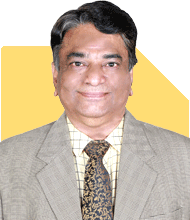Maxim Emmanuel |211 Answers |Ask -Follow
Soft Skills Trainer - Answered on Apr 27, 2024
An alumnus of the Xavier Institute of Management and Research, Mumbai, Maxim has over 30 years of experience in training young professionals and corporate organisations on how to improve soft skills and build interpersonal relationships through effective communication.
He also works with students and job aspirants offering career guidance, preparing them for job interviews and group discussions and teaching them how to make effective presentations.... more

Sir i am 23 yr old with a btech degree i am currently working in xcompany as a customer service associate but soon it will get over as it was a contractual job now i don't know what to do i also tried to pursue mba but did not admission in my dream clg plz guide what to do now
Let me guide you through the process of being employed, design a powerful resume not more than 2 pages highlight skill and performance!
Go directly to websites of companies and apply in their career section see that your job matches their JD (Job Description)
Well you will certainly find opportunities!
As far as the MBA.. it will happen.. Sooner not later.. Stay focussed!
You may like to see similar questions and answers below
Mayank Rautela |238 Answers |Ask -Follow
HR Expert - Answered on Mar 30, 2022
Mayank Chandel |498 Answers |Ask -Follow
IIT-JEE, NEET-UG, SAT, CLAT, CA, CS Exam Expert - Answered on May 26, 2023
Aashish Sood |100 Answers |Ask -Follow
CAT, Management Expert - Answered on Jan 07, 2024
Maxim Emmanuel |211 Answers |Ask -Follow
Soft Skills Trainer - Answered on Apr 21, 2024
Ramalingam Kalirajan |1796 Answers |Ask -Follow
Mutual Funds, Financial Planning Expert - Answered on May 09, 2024
Ramalingam Kalirajan |1796 Answers |Ask -Follow
Mutual Funds, Financial Planning Expert - Answered on May 09, 2024
Ramalingam Kalirajan |1796 Answers |Ask -Follow
Mutual Funds, Financial Planning Expert - Answered on May 09, 2024
Ramalingam Kalirajan |1796 Answers |Ask -Follow
Mutual Funds, Financial Planning Expert - Answered on May 09, 2024
Ramalingam Kalirajan |1796 Answers |Ask -Follow
Mutual Funds, Financial Planning Expert - Answered on May 09, 2024
Ramalingam Kalirajan |1796 Answers |Ask -Follow
Mutual Funds, Financial Planning Expert - Answered on May 09, 2024
Ramalingam Kalirajan |1796 Answers |Ask -Follow
Mutual Funds, Financial Planning Expert - Answered on May 09, 2024
Ramalingam Kalirajan |1796 Answers |Ask -Follow
Mutual Funds, Financial Planning Expert - Answered on May 09, 2024
Ramalingam Kalirajan |1796 Answers |Ask -Follow
Mutual Funds, Financial Planning Expert - Answered on May 09, 2024
Ramalingam Kalirajan |1796 Answers |Ask -Follow
Mutual Funds, Financial Planning Expert - Answered on May 09, 2024























